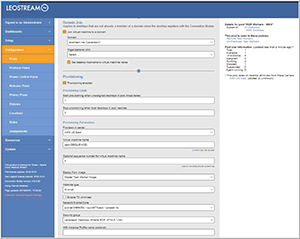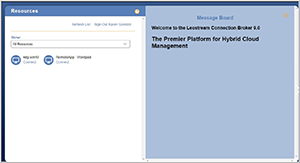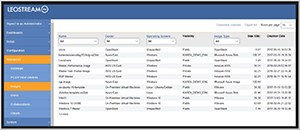How-To
Get Flexibility for Your VDI Deployment with Leostream 9 Connection Broker
The latest update is one of the largest, according to the company, including bug fixes, an improved UI, enhanced cloud management functions, plus many more improvements.
I've been following Leostream for some time now. The company interests me because, out of all of the virtual desktop infrastructure (VDI) companies, I find it to be the most agnostic with regard to the protocol and source of the virtual desktop. Leostream only provides a Connection Broker and gateway for VDI users and their desktops and can provision virtual desktops in VMware vSphere, Amazon Web Services (AWS), Microsoft Azure and OpenStack.
In June 2018, Leostream released Leostream 9 -- the latest iteration of its Connection Broker and gateway. The Leostream 9 platform works with virtual desktops and hosted applications residing on-premises, as well as those on public or hybrid clouds.
Leostream is stating that this is one of its largest updates, including many new features such as: a modernized UI (Figure 1), new packaging and installation methods, updated licensing, enhancements to its cloud management functions, as well as the expected bug fixes. All of these enhancements seem to capitalize on Leostream CEO Karen Gondoly's belief that the future of VDI lies within the cloud, and hybrid clouds are the key to a successful transition from on-premises to cloud-based virtual desktops.
 [Click on image for larger view.]
Figure 1. The updated Leostream 9 UI.
[Click on image for larger view.]
Figure 1. The updated Leostream 9 UI.
Upon diving into the release notes for Leostream 9, it's evident that Leostream has redesigned and reorganized the administrator interface to make it easier to navigate and more intuitive to use. The end-user interfaces have also been updated and refreshed to give them a more modern design (Figure 2).
 [Click on image for larger view.]
Figure 2. The Leostream 9 end-user login UI.
[Click on image for larger view.]
Figure 2. The Leostream 9 end-user login UI.
Although the outward appearance is what most users will initially take note of, it looks like a lot of the changes and improvements that Leostream made are under the covers and may not be immediately apparent to the average virtual desktop user. These updates include changes to its security and database mechanisms, and enhancements to its role-based access control (RBAC) scheme to enable a more granular administration policy.
The Leostream Connection Broker can be installed on CentOS, Red Hat Enterprise Linux, Ubuntu and SUSE Linux Enterprise Server OSes.
Because this is a major update, upgrading a Leostream 8.2 Connection Broker to version 9 isn't supported. Instead, you'll need to rebuild and relicense your Leostream 9 Connection Broker, and then copy over your 8.2 configuration to your new environment. The table in Figure 3 shows which Leostream Agents are compatible with the different Leostream Connection Brokers.
 [Click on image for larger view.]
Figure 3. Leostream Agent and Connection Broker compatibility.
[Click on image for larger view.]
Figure 3. Leostream Agent and Connection Broker compatibility.
 [Click on image for larger view.]
Figure 4. The Leostream 9 inventory page.
[Click on image for larger view.]
Figure 4. The Leostream 9 inventory page.
Final Thoughts
As shown in Figure 4, the greatest attribute of Leostream is its agnosticism regarding where the virtual desktop resides and the protocol it uses. Knowing that you can manage and connect to a desktop regardless of where it resides can give you a lot of flexibility with your VDI deployment.
About the Author
Tom Fenton has a wealth of hands-on IT experience gained over the past 30 years in a variety of technologies, with the past 20 years focusing on virtualization and storage. He previously worked as a Technical Marketing Manager for ControlUp. He also previously worked at VMware in Staff and Senior level positions. He has also worked as a Senior Validation Engineer with The Taneja Group, where he headed the Validation Service Lab and was instrumental in starting up its vSphere Virtual Volumes practice. He's on X @vDoppler.